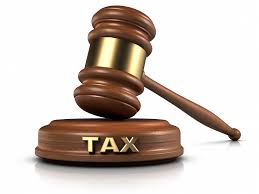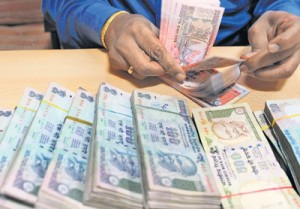In this blog post, Ranjeet Yadav, an Ex-Commissioner of Railway Safety with the Indian Railways and a student pursuing a Diploma in Entrepreneurship Administration and Business Laws from NUJS, Kolkata, analyses the Wealth Tax Act and its subsequent dissolution.
Introduction
The tax levied by the government on a person’s personal net wealth is known as the wealth tax. Introduced in India in the late 1950s with the aim to reduce financial inequalities amongst the people of the country, it was in the form of a direct tax. Wealth tax was essentially aimed at taxing the ‘Super rich taxpayers’ who accumulated wealth both by inheritance or/and on their own, and therefore, were expected to make a larger contribution.
The wealth tax in India, a type of direct tax was to be filed separately by an individual, a Hindu Undivided Family (HUF ) or a company on its net wealth as per the provisions contained in ‘ The Wealth Tax Act , 1957 ‘ read with amendments thereof along with the year wise ‘Finance Act’.
Present Status
The wealth tax was proposed to be abolished in the Union budget presented to the Parliament by the Finance Minister on 28th, February 2015. It was envisaged that from the next financial year, i.e., 2015-16 onward, there would be no levying of wealth tax. For the net wealth held as on March 31st, 2016, by an assessee, there would be no requirement to pay any wealth tax and of filing wealth tax returns during the assessment year 2016-17 for the financial year 2015-16. Accordingly, the application of ‘The Wealth Tax Act, 1957’ stands discontinued from the 1st of April 2016.
The wealth tax has been replaced with an additional surcharge of 2 per cent on the super-rich with a taxable income of over one crore annually. The company that earns Rs 10 crores or higher in a financial year is also grouped in the super rich category.
The decision to abolish the wealth tax was taken considering the low value of its collection, but the high cost involved to collect it. For the financial year 2013-14, total wealth tax collection was only Rs 1008 crores. There had not been any significant growth over the past years; it was only Rs 788.67 crores during 2011-12 and Rs 844.12 crores during 2012-13. The Finance Minister in his budget speech stated that ‘should a tax which leads to high cost of collection and a low yield be continued or should it be replaced with a low-cost and higher yield mechanism’. He further said that though abolishing wealth tax would result in a loss of about Rs 1000 crores in taxes, but the additional surcharge would bring in about Rs 9000 crores.
Pre-2015-16 Scenario
An individual, HUF, or a company had to pay one percent as a wealth tax on the net wealth of value over Rs 30 lakhs. For the purpose of the valuation of assets, which included immovable assets, vehicles, jewellery, bullion, yachts, boats, aircraft and others, their values as of the 31st of March were taken, subject to certain exemptions of such productive assets which included mutual funds, fixed deposits, exchange traded gold funds and saving bank accounts. A self-occupied residential house or a plot of land that is not bigger than 500 square meters was also exempt from wealth tax.
Governing Act for Wealth Tax in India: The Wealth Tax Act, 1957
It is an Act of the Parliament of India which provided for levying of wealth tax on an individual, Hindu Undivided Family (HUF) or company in possession of certain value of net wealth on the corresponding valuation date, i.e., last date of the previous year. The Act applies to the whole of India including the state of Jammu and Kashmir and the Union Territories.
The Wealth Tax Act, 1957 governed the taxation processes associated with the net wealth of an individual, HUF, or a company possessed on the valuation date. It came into force on April 1st, 1957. This Act required liable Assessees to file their wealth tax return online in Form BB. The due date for filing returns of the wealth tax was same as that applicable to an assessee under the Income Tax Act.
The valuation date was considered the day of 31 March immediately preceding the Assessment Year. The net wealth that an assessee possessed on the valuation date determined the tax subject to the residential status of the assessee, the value of assets, and the exact amount of wealth at the end of the date.
The wealth tax was calculated at the rate of 1 per cent of the amount of net wealth that exceeded Rs 30 lakh on the valuation date. The net wealth of an assessee included the value of specified unproductive assets on the valuation date after subtracting the debts the assessee owed to the said assets. Wealth tax did not attract any Education Cess or Surcharge.
Wealth tax was not applicable to Trusts, Partnership firms, Association of persons, a company registered under Section 25 of the Company Act 1956, Cooperative Societies, Social Clubs, Political parties, Mutual funds, etc.
The residential status of an individual was one of the key parameters to ascertain wealth tax liability. Resident Indians were liable to pay wealth tax on their global assets. However, nonresidents Indians and foreigners were liable to pay wealth tax on their assets in India only. If a nonresident Indian returns to India, his assets would not be exempt from wealth tax. Assets acquired by NRIs within one year of their return were exempt.
Assets which were covered under wealth tax are—
- Real estate,
- House property: while one residential home was exempt, more than one own house would attract wealth tax. However, wealth tax was not applicable to a property if it was used for business or rented for 300 days or more in a year.
- Vehicles: wealth tax was levied on the market price of a car, except when used in a car hiring business,
- Boats, yachts, aircraft’s,
- Gold, silver, platinum ornaments,
- Cash in hand above Rs 50000.

Assets which were kept out of the purview of the wealth tax are—
- Investment securities viz, shares, bonds, units of mutual funds, units of gold deposit schemes,
- Houses/ plots of area below 500 square meters,
- Houses as place of business or profession,
- Residential properties rented out for 300 days or more in a year,
- Vehicles for hire,
- Stock-in-trade business assets.
Calculation of wealth tax: Wealth tax was calculated on the market value of all the assets owned, irrespective of whether they yielded any return or not. Wealth tax was based on the valuation of the assets as on March 31st and would, therefore, apply to every asset acquired even at the end of the financial year. However, assets sold during the year would not come under the purview of wealth tax. Some Double Taxation Avoidance Agreements in the country provided relief to taxpayers from paying wealth tax if they had already paid in any other country.
Filing of wealth tax returns: E- filing of wealth tax return was made mandatory, the effective financial year 2014-15. The form would be filled and submitted online using a digital signature. This, however, would not be compulsory to those who were not liable to be audited. Such persons could file a return on his wealth tax through traditional methods, i.e., through paperwork.
 Serato DJ Crack 2025Serato DJ PRO Crack
Serato DJ Crack 2025Serato DJ PRO Crack












 Allow notifications
Allow notifications



